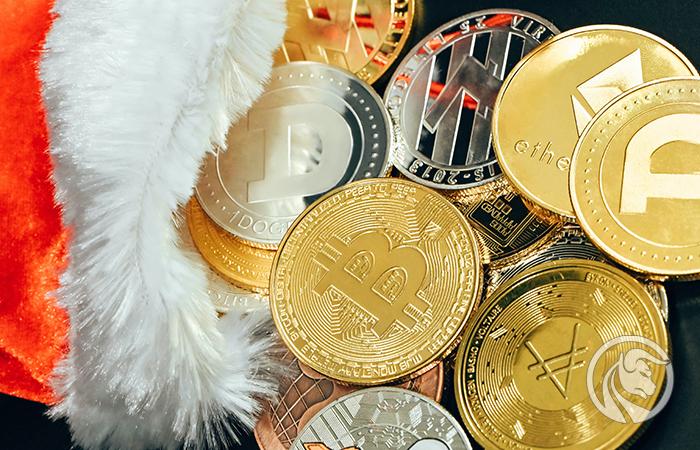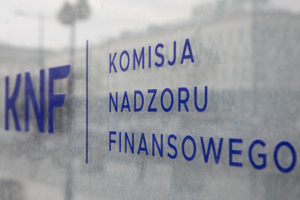Regulations, Web 3.0, NFT, CBDC - Crypto Predictions 2023 by Simon Peters
This year has been a challenge for the cryptocurrency market. However, "crypto winter" may give way to "crypto spring". What can await us in 2023? Here are six indicators that eToro analyst Simon Peters believes can determine when the market will boom again.
Inflation, interest rates and the Fed
In 2022, we witnessed a correlation between cryptocurrencies and stocks in the way they react to macroeconomic conditions. Rising inflation and increased interest rates had an impact on the cryptocurrency market in 2022, depriving investment markets of liquidity across the board. In particular, it exposed structural weaknesses in the cryptocurrency sector, but also highlighted which companies have solid foundations and resilience. These companies will be able to take advantage of the new landscape.
With inflation peaking, we can expect a positive stimulus for cryptocurrencies and a shift in sentiment to "buy" again. The return to the crypto bull market may also be supported by maneuvers Fed and interest rate cuts expected from November 2023. And when interest rates start to fall, it will create more liquidity and give the opportunity to re-enter the investment markets. This result is based on the improving picture of inflation.
Regulations and Regulations
Regulations are certainly the most important in 2023, which should be desired by investors, platforms and users of cryptocurrencies.
Regions such as the EU are already making headway with legislation like MiCa, while the Financial Services and Markets Act will change the rules of the game in the UK. The US is also doing a regulatory reshuffle, but it remains to be seen what direction it will take in 2023.
Ensuring compliance with key practices such as client asset segregation, proper collateral and reconciliation, as well as transparency will be very important for both regulators and cryptocurrency market players who are looking for a more sustainable market in the wake of this year's events. It will also be the key to rebuilding trust.
Reaching the bottom and waiting for Bitcoin to halve
A popular “on-chain metric” for identifying price highs and lows Bitcoin jest MVRV-Z result. It now indicates that Bitcoin's current market value is well below its realized or "actual" value and is at its lowest levels since December 2018, the bottom of the recent Bitcoin bear market. Historically, reaching this point was a good indicator that we are near the bottom of the bitcoin price cycle and suggests we may be closer to a "crypto spring".
Another event worth watching (though scheduled for 2024) is the next Bitcoin halving, which could result in increased market share as early as 2023. Bitcoin block rewards are awarded to miners for verifying transactions and adding a new block to the bitcoin chain. Halving the reward is an event included in the design of bitcoin, whereby every 210 blocks - roughly every four years - the block reward given to miners is reduced by 000%.
Halving will affect investor sentiment due to supply and demand. The maximum number of bitcoins that can ever exist is 21 million. This, coupled with declining issuance due to smaller rewards, creates an element of uniqueness for the asset and could theoretically push prices up. If new issuance goes down and demand remains constant, prices go up.
Since its inception, each bitcoin prize halving has typically been followed by another cryptocurrency bull market, which is why many market observers can predict that another bull market will begin to take shape in 2024. Anticipating this could also help boost the price throughout 2023.
Web 3.0 and NFT
The Web 3.0 journey has not been without bumps in the past year. However, continuous updates and development map of major networks such as Ethereum and Cardano, will make investors focus on long-term growth and innovation.
There will be renewed efforts to improve scalability, as we see with Ethereum's highly evolved map of changes such as "sharding". Ethereum network sharding is effectively where the network is divided into smaller segments or "shards" to spread the load, reduce congestion, and increase the number of transactions per second on the chain.
Like The Merge, such updates will be highly anticipated in the market. While The Merge took place in the context of broader macro issues and has so far failed to lead to positive price movements, fresh innovations in a more conciliatory environment may be well received and support the cryptocurrency rally.
Meanwhile, euphoria NFT it may return in anticipation of transformative use cases for the technology, such as the tokenization of real-world assets or financial instruments, including fixed income products such as mortgages and bonds. The introduction of real-world assets and instruments is enjoying growing interest among institutional investors and may be a testament to a massive shift in the way the entire financial system handles these types of products and services.
Energy consumption
Hashrate and difficulties continue to climb to record highs for Bitcoin. While this makes the Bitcoin network more secure, more computing power is needed by mining operations to remain competitive, which can further increase the network's overall power consumption.
Energy consumption will therefore continue to be a bone of contention in the cryptocurrency sector, with Bitcoin enthusiasts quickly explaining why this is not a bad thing, and Ethereum supporters pointing to a large decrease in energy intensity. Despite the ongoing global energy crisis, the debate will remain as gray as ever.
CBDC
Central bank digital currencies (CBDCs) may have been somewhat ignored in all the hype of 2022, but design and innovation is being carried out by central banks and governments.
In 2023, central banks will conduct more pilot tests and feasibility studies on the use cases and potential of this technology and its possible applications, especially in the field of cross-border payments. We are already seeing some steps in this direction, especially from institutions such as the Bank of Japan and the Singapore authorities, which are already making progress on serious testing.






















![Forex Club – Tax 9 – Settle tax on a foreign broker [Download the Application] Forex Club - Tax 9](https://forexclub.pl/wp-content/uploads/2024/02/Forex-Club-Podatek-9-184x120.jpg?v=1709046278)
![Trading View platform – solutions tailored to the needs of traders [Review] trading view review](https://forexclub.pl/wp-content/uploads/2024/03/trading-view-recenzja-184x120.jpg?v=1709558918)
![How to connect your FP Markets account to the Trading View platform [Guide] fp markets trading view](https://forexclub.pl/wp-content/uploads/2024/02/fp-markets-trading-view-184x120.jpg?v=1708677291)
![How to invest in ChatGPT and AI? Stocks and ETFs [Guide] how to invest in chatgpt and artificial intelligence](https://forexclub.pl/wp-content/uploads/2023/02/jak-inwestowac-w-chatgpt-i-sztuczna-inteligencje-184x120.jpg?v=1676364263)


![WeWork – the anatomy of the collapse of a company valued at $47 billion [WeWork, part II] wework bankruptcy story](https://forexclub.pl/wp-content/uploads/2024/04/wework-bankructwo-historia-184x120.jpg?v=1711729561)
![Adam Neumann – the man who screwed up Softbank [WeWork, part AND] adam neumann wework](https://forexclub.pl/wp-content/uploads/2024/04/adam-neumann-wework-184x120.jpg?v=1711728724)





![How to transfer shares to another brokerage office [Procedure description] how to transfer shares to another brokerage house](https://forexclub.pl/wp-content/uploads/2024/03/jak-przeniesc-akcje-do-innego-biura-maklerskiego-184x120.jpg?v=1709556924)

![The most common mistakes of a beginner trader - Mr Yogi [VIDEO] Scalping - The most common mistakes of a beginner trader - VIDEO](https://forexclub.pl/wp-content/uploads/2024/03/Scalping-Najczestsze-bledy-poczatkujacego-tradera-VIDEO-184x120.jpg?v=1711601376)
![Learning patience: No position is also a position - Mr Yogi [VIDEO] Scalping - Learning patience - No position is also a position - VIDEO](https://forexclub.pl/wp-content/uploads/2024/03/Scalping-Nauka-cierpliwosci-Brak-pozycji-to-tez-pozycja-VIDEO-184x120.jpg?v=1710999249)
![When to exit a position and how to minimize losses - Mr Yogi [VIDEO] Scalping - When to exit a position and how to minimize losses - VIDEO](https://forexclub.pl/wp-content/uploads/2024/03/Scalping-Kiedy-wyjsc-z-pozycji-i-jak-minimalizowac-straty-VIDEO-184x120.jpg?v=1710336731)









